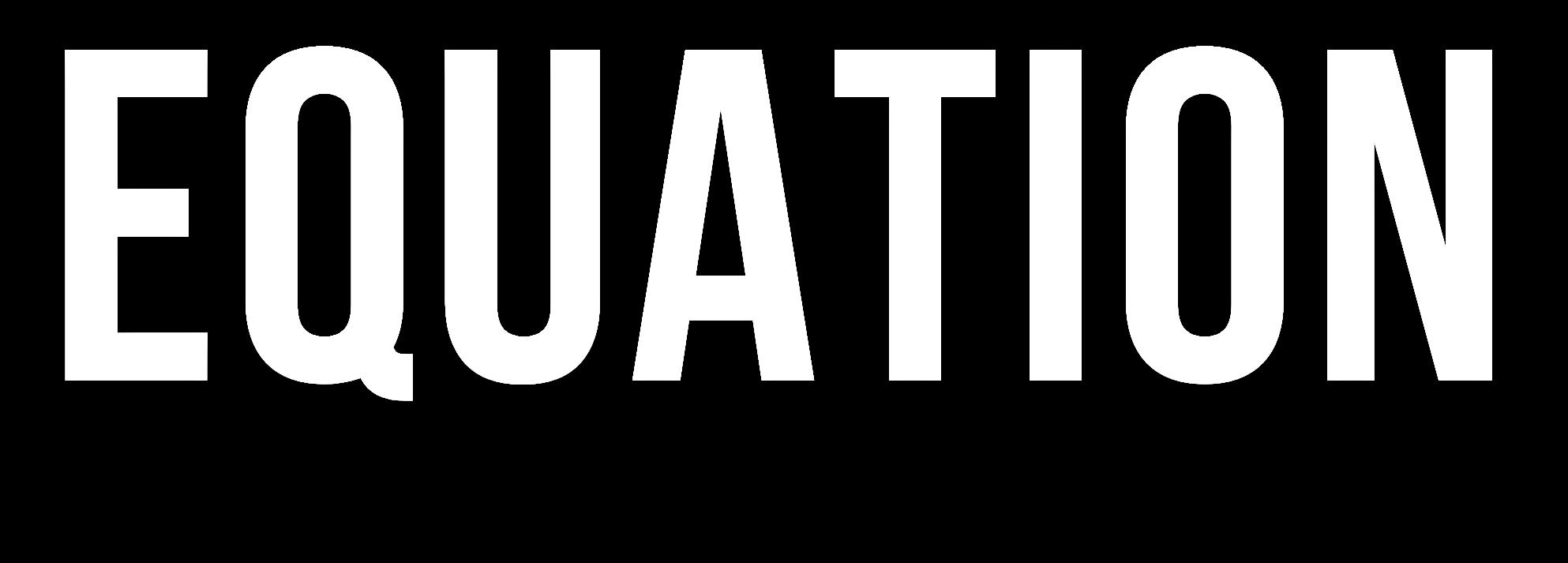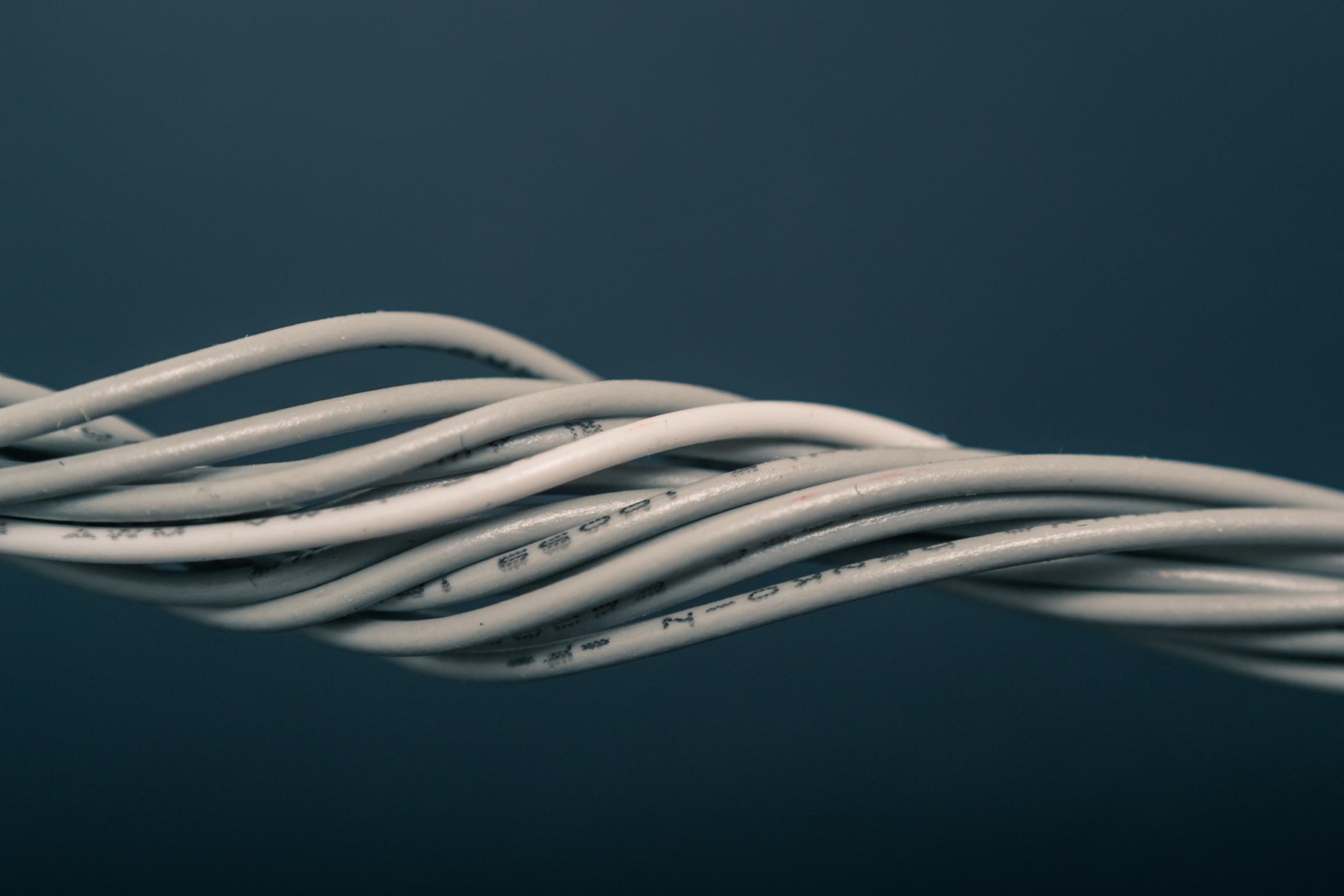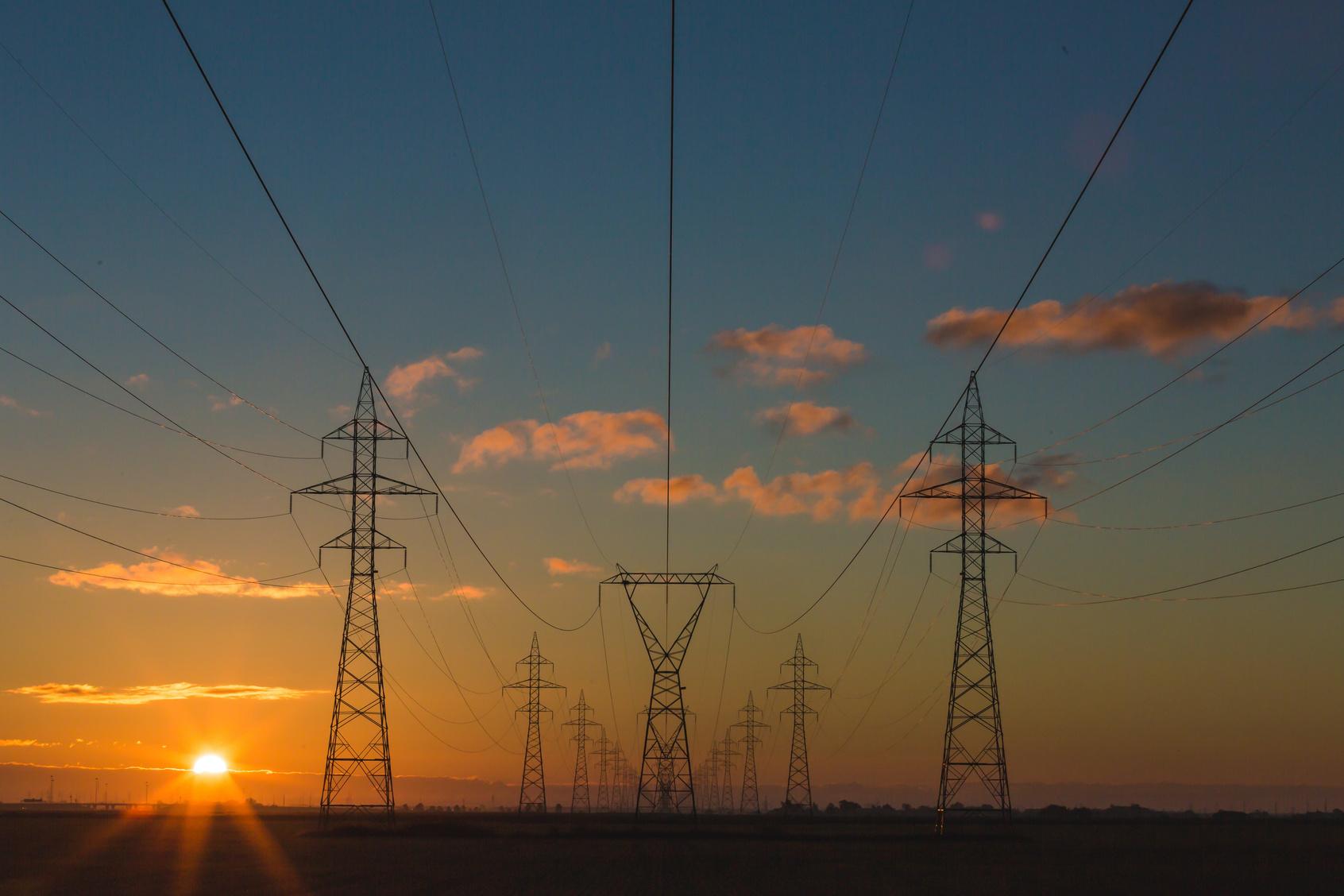



I S S U E N O . 2 E T H I C A L I N T E L L I G E N C E . C O
TABLE OF CONTENTS
0 2
L e t t e r f r o m t h e E d i t o r
b y O l i v i a G a m b e l i n
0 3
Habits in the Home: How Technology Shapes
Societal Interactions
b y E l i a n a B e r g a m i n
0 8
A s s i s t i n g a M o r e A c c e s s i b l e H o m e
b y A b h i s h e k G u p t a
1 4
E m b e d d i n g E t h i c s i n t o T e c h n o l o g y
P r o c u r e m e n t
w i t h M a t t B a l l a n t i n e & J o n C o c k e r
2 0
P r a c t i c a l G u i d e t o P r i v a c y : C o n s u m e r
A g e n c y & C o r p o r a t e R e s p o n s i b i l i t y
b y A n n i e V a l e n t i n e
2 5
T h e E n e r g y S a v i n g O p p o r t u n i t y o f S m a r t
H o m e D e v i c e s
b y S w a r n a v P u j a r i
P A G E 0 1
LETTER FROM THE EDITOR

Dear Reader,
For this issue, we wanted to bring digital ethics home Literally
The ability to turn off lights in another room, control heat depending on time of day, and time the TV volume to prank your partner are all applications of technology that create an experience that is rather, well, magical Although we know we aren’t really bending the laws of physics, having such nuanced control over our physical surroundings does often feel supernatural This may be fun to explore, but as we continue to bring an increasing amount of devices into our houses, we need to ask ourselves if this technology is really creating the kind of home we all crave
What was once an impenetrable fortress, the home has since been permeated with smart devices of all shapes and sizes. In some cases this has brought good, such as an increase in accessibility and decrease in environmental impact, while in other cases this has brought harm through the invasion of privacy and security risks Whatever the use case of technology may be, the one constant in this equation is our desire to make our homes a place of comfort and peace Which is why no matter how magical the device may be, technology designed to amaze will always succumb to the more comfort-bringing solutions in the long-run.
So, as you read through the following articles, I ask you not to consider what kind of domestic technology you should or should not be developing Instead, I challenge you to ask yourself what it means to build a home full of comfort, peace, and ultimately love
Happy reading,

P A G E 0 2
T H E E Q U A T I O N • I S S U E N O 2
HABITS IN THE HOME: HOW TECHNOLOGY SHAPES SOCIETAL INTERACTIONS
 by Eliana Bergamin
by Eliana Bergamin
P A G E 0 3
Technologies and values: how can these two seemingly disconnected words have such a strong influence on the other?
Technologies play a fundamental role in our everyday lives From the moment you hit snooze on your smartphone to Netflix asking if you are still watching long after you’ve drifted off to sleep, you are surrounded by interactions with technology. Although you may be well aware of how you use technology in your daily life, how that technology interacts and shapes your moral development might not be so explicit
Let me introduce you to something called Mediation Theory. It argues that technologies are not simplytools, but rather artifacts that mediate your interaction and behaviour in the world. This means that your existence in the world, who you are as a person, is actively shaped by the technologies you interact with
As Dr. Kudina illstratues, when technology mediates your being-in-the-world, it can also mediate your values. As your everyday life is embedded in a moral scenario, technologies also contribute to producing the meaning of your values, and sometimes even shape it
If technology can shape your values, then logically it has a heavy influence in forming your habits. And where are you most receptive to developing and forming habits? In your own home.
Your home is a place of comfort, security, and routine. It is the one place, hopefully, that you feel at ease while spending a good majority of your time in. Habits take time and repetition to form, and the home provides that time and space for repetition needed Additionally, values also play an essential role in habit formation, as you will put time and energy into the things you care about. For example, if you value quality time with your family, you may form the habit of family dinners or game nights

“Technologies that we use coproduce our values and can even change them”
P A G E 0 4
- Dr. Olya Kudina, TEDx Technological Mediation of Morality
When you bring technology into your home, you are bringing in something that will influence both your values and your habits As Dr Kudina explains, the technology you interact with can co-produce and even shape your values If this technology is in your home and something you use daily, then as it is influencing your values it also influencing what habits you are developing.
In some instances these can be good habits, but that is not always the case. To help illustrate this chain of influence, let’s take a closer look at an all-too-familiar smart home device
I won’t respond to that: A Case Study
It’s December 2018. You’re late for work, and in a rush to get to the door you ask Siri “Hey Siri, what will the weather be like today?”, to know whether to take your umbrella with you. The device doesn’t understand your words, and in a fit of anger you shout “Siri, you’re a bitch!”.
What’s the answer you get? “I’d blush if I could”
Virtual Personal Assistants – often shortened to VPAs – are all those software agents installed into a growing number of devices we verbally interact with on a daily basis In the home, you know these commonly as Alexa, Siri, or Nest They’re quick to respond, efficient, easy, and sometimes even fun to use.
Let’s take a step back I’ll give you a couple of minutes to think about the names of smart home assistants that come to your mind
Done?
I bet that at least half of their names are female, and I also bet that the majority of the voices you’re familiar with are female. At first glance, this may be no big deal. After all, it’s just algorithmic software that answers your questions.
However this simple combination, together with the AI working behind it, can have significant implications for how you interact with your peers, as well as for societal gender equality at large
Remember Siri’s answer “I’d blush if I could” to the user’s harassment? Well, that is an actual answer Siri provided up until the end of 2018 When discovered, users were disapproved and even a whole UNESCO campaign project “I’d blush if I could” was launched. The project was aimed at closing gender divides in digital skills through education by bringing together Big Tech to rethink and re-design the software that runs behind their smart home assistants
All’s well that ends well
Well not really
Where’s the problem then?
Two years after the initial UNESCO campaign, Siri’s response has changed to “I won’t respond to that” in cases of verbal abuse But Siri is not the only smart home assistant in question. Researcher Josie Young addresses a similar case, as “I won’t respond to that” is actually the same answer Alexa provides in case of sexual harassment.
P A G E 0 7 P A G E 0 5
Although this is a step in the right direction, it still leaves room for improvement “I won’t respond to that” remains a passive, nonconfrontational response to the well-known and rampat issue of sexual harrashment and verbal abuse When these kinds of evasive responses become associated with the female names and voices assigned to smart home assistants, it reinforces the historic gender bias that we as a society are trying to fix. Additionally, it has significant implications for the habits we form in addressing and interacting with people in general and outside of the home

In her TedTalk, Dr Kudina portrays a brilliant example of how the interaction with Alexa bots can become hazardous Young kids start interacting with Alexa bots they have lying around in the house, even addressing them using aggressive language This is already worrying in itself, but the worst consequences start appearing once those kids interact with other kids. The parents of kids who aggressively interact with Alexa bots start noticing that the same behaviour becomes adopted by their peers. From shouting aggressively at Alexa, to shouting aggressively at their school friends, the technological interaction has shaped their language and their behaviour, effectively bringing out this negative habit originally formed in the home
The behaviours you adopt in your everyday life, from asking Siri the weather to asking Alexa to set a reminder for your dentist appointment, do not remain enclosed within the boundaries of your home When you interact with technology, the technology also interacts with you, shaping you in return.
Second, you as a developer of smart home technology need to be acutely aware of how, by whom, and with what intention your solutions are being designed Embedding equality and ethics by design creates stronger technology, greater equality in the home and workplace, and results in better user wellbeing
If the technology you place in your home shapes how you behave and interact outside of it, then it has the potential to shape who you are as a person.
And it’s about time you do respond to that.
EI.
y
P A G E 0 7 P A G E 0 6
BRINGING ETHICS AS A SERVICE TO LIFE

Join Olivia Gambelin, CEO & Founder of EI, and Matt Henderson, COO of EI, in a discussion about how they are bringing Ethics as a Service to life through the newly launched EI Ethics Board Also covered in this episode is a conversation about embedding digital ethics in a business, what the role of ethics experts is, and why an ethicist is both a translator and sometimes a therapist in the process.
THE ETH EQUAT ON


P A G E 0 7
ASSISTING A MORE ACCESSIBLE HOME
 by Abhishek Gupta
by Abhishek Gupta
P A G E 0 8
One of the most exciting applications for smart home technology is in assistive care This is otherwise known as assistive smart home technology, and it is any technology that augments or automates routine or other tasks around the home, enabling those who require care to live inside their homes with minimal assistance
Whether designed for the caretaker, the individual requiring care, or a loved one with a disability, smart home technology has the ability to bring autonomy to those who may otherwise lack it in their own home, as well as to provide comfort and ease to the various care providers
The potential of assistive technology
Our homes are meant to be places of comfort and peace, a space where we feel in control and feel free to express ourselves. For individuals with disabilities and different needs of care, this is not necessarily always the case. However, with well-intentioned and well-designed smart home technology, there is the opportunity to empower them within their own homes, creating that sense of peace, comfort and control we all yearn for
Assistive care technology are tools that
enable people to have greater autonomy than if they were to live in a place with someone who had to be ever present to assist with quotidian tasks. For example, voice assistants can open blinds in the morning or open the door for authorized visitors for those with limited mobility. Automated home cleaning robots can take care of basic floor cleaning around the home
Not only can assistive smart home technology empower those with disabilities, it can also help caretakers provide better care and enable loved ones to help even when physically far away Smart cameras and wearables that can detect falls and push alerts to caregivers and family members can alleviate the need for constant in-home presence while still providing peace of mind to both the individual and their loved ones.
Additionally, persistent remote connection is a great way to aid loved ones in a time of emergency even if you are physically distant For example, in the case of elderly loved ones, cascading trigger alerts based on severity can obviate the need for ad-hoc communication in a situation of duress when you might otherwise forget to inform someone or forget to tap into resources that can help you the most in the moment In a childcare scenario, for larger homes or in a situation with multiple children, safety sensors and automated locks can protect children from getting into harm. These systems can keep certain areas off limits and provide real-time updates to parents who are juggling multiple things at a time, which is especially important as we all continue to work from home with the COVID19 pandemic.
P A G E 0 9
From controlling lighting to what music gets played and whether there is enough milk in the fridge, smart technologies have permeated into all facets of our homes.
Assistive smart home technology isn’t risk-free though
As with any application of technology, there is always the darker side to consider Although smart home technology has the potential to positively impact the lives of people with disabilities, the elderly, children, and those around them, there are still significant risks that must be considered

The constant surveillance of people’s activities can trigger the Hawthorne effect; the people under observation alter their behavior because they know they're being watched. This is where the sanctity of the home gets intruded upon. The home is supposed to be the last bastion of privacy, but with the introduction of digital technology into the home, we are inviting in
surveilling eyes and ears to silently collect data on all our activities Other intrusions include reshaping behaviours through nudging by automated reminders and reshaping levels of comfort by automating the level of heating and lighting determined algorithmically
It is essential to keep the wellbeing of the person needing assistive care as a top priority for assistive smart home technology However, it is also important to consider that caretakers are heavily impacted by this very same technology. There is a risk that the introduction of such technologies might require the caregivers to “always be on and connected” which would make it difficult for them to have time off and trigger burnouts.
P A G E 1 0
Let's take the example of childcare. Nanny cams have existed for many years, but they required human monitoring to ensure that things were as they should be With the introduction of computer vision capabilities powered by artificial intelligence, there is a likelihood that we have such tools act in an automated fashion by detecting whether someone is present (object detection), check if they're an authorized person (facial recognition), and notify of anomalies (through heuristics or anomaly detection)
It's well known that AI-enabled systems are not without flaws, especially when faced with varying circumstances that they haven't encountered before. In particular, we see that

in the first step, given new configurations of home that are different from the ones encountered in the training dataset, the system might not be able to always detect the presence of the caretaker if there are occlusions or low lighting conditions in the house
Second, facial recognition is known to work well with only a small set of types of faces Meaning that if the caretaker doesn't fall within those categories, you can get false alarms triggered by the system because it's unable to correctly identify them. Finally, anomaly detection depends heavily on the norm being a stable set of situations against which such an evaluation is made. This might not always work as expected, say for example you have a household in a community where it's a common practice for neighbors to come in and out, play around with the kids, feed them, etc which may not be well represented in the dataset if it focused on homes in other types of communities
What implications does this have for the interactions between caretaker and parent? If the system has been deployed surreptitiously, then it widens the power chasm between the parent and the caretaker. The parent might either directly confront the caretaker about activities and things that went on at home while they were away, relying on the output from the system, rather than actually verifying the video content themselves. Although that is the extreme, it is likely that the parent’s behavior towards the caretaker will take on nuanced and passive aggressive tones, nudging them to behave in a certain way This is an erosion of trust, ironic in a situation which requires a high degree of trust to begin with: taking care of a child
P A G E 1 1
How do we navigate these challenges such that we might harness the benefits of this technology?
While there are certainly cons to inviting this technology into our homes, there are pros too, and the best way to square them off is through informed consent and awareness
A framework, even a simple one which asks what might be the worst thing that happens if something goes wrong, can help surface questions, and hopefully answers, that will help us make informed decisions. The benefit of having a framework is that it helps us be explicit about our values and provides a shared ground for making these decisions together rather than relying on unexpressed subjective perceptions
For our example with the caregiver for the child, in terms of navigating between benefits and risks for caretakers, communication with the caretaker will be one of the strongest tools to utilise A better approach is to talk openly with the caretaker about how you plan on using this technology inside the home, and what it means for the working relationship More so, sharing revised expectations and what the approach will be to handle alerts from the system with the caretaker will help to build trust. This in turn ensures you use the tool as a supplement to their hard labor, rather than a replacement for it or as a tool of supervision. Finally, understanding what happens if the technology fails (hardware and software failures or network disconnections) will also help surface what contingencies need to be in place for you to, no matter what, achieve your goal of child safety
Without necessary education and awareness
building, the perils from these tools far outweigh the benefits. Just as was the case with childcare, being explicit about a framework to use and deploy any assistive smart home technology will be critical to the success of integrating this technology into the fabric of our local communities
The introduction of these technologies certainly has the potential to make our lives a little better, especially for those who might otherwise be constrained in their freedoms with the need to have someone always present to take care of them. Our homes can become more accessible and safe in the process as we explore making things easier for those who have limited mobility and those who are juggling multiple things at home at the same time and need a hand in making sure that their loved ones are safe
But, just as with the example above, such systems have nuanced ways in which they erode trust and reshape social interactions In particular, we run the risk of mediating our interactions with each other through alerts and notifications from the system rather than the friendly wave and checking in with how our fellow residents are doing. They also become a gathering place for paranoia and hatred to manifest as we eye everyone with suspicion, based on perhaps illegitimate and false alarms raised from the systems.
Social interactions within and outside the home are bound to be reshaped with the introduction of smart home technology If they're brought in, what we should emphasize is being deliberate about how they're being reshaped, rather than succumbing to path determinism that will creep up on us subtly and perniciously EI.
P A G E 1 2
THE STATE OF AI ETHICS
The State of AI Ethics Reports are published by the Montreal AI Ethics Institute capturing the latest in research and reporting in the domain of AI ethics with detailed analysis and commentary from technical leaders and policymakers from around the world.

P A G E 1 3
EMBEDDING ETHICS INTO TECHNOLOGY PROCUREMENT

P A G E 1 4
Interview with Matt Ballantine & Jon Cocker
When you aren’t building the technology yourself, how do you still consider and embed digital ethics?
In 2021, Ethical Intelligence partnered with two UK Housing Associations (RHP Group and Platform Housing Group*) in order to create and introduce an ethics-based SMART home IoT device Procurement Framework. This carefully curated framework captures the rights of tenants, responsibilities of the housing associations, and values of sustainable living in action
We recently caught up with Matt Ballantine, Head of Technology and Transformation at RHP & Jon Cocker, Chief Information Officer from Platform Housing, the two champions of this initiative
*RHP is a housing provider in South West London, providing support to around 10,000 households They’ve been in existence for just over 20 years now
Platform Housing Group is the largest Registered Provider in the Midlands and one of the largest in the country, owning over 46,000 homes Over the last two years, we have built more social and affordable homes in England than any other social housing provider and are a strategic partner for Homes England
Ethical Intelligence: Let’s talk about the good, the bad, and the ugly What positive impacts versus misuse cases have you seen with technology in the housing industry?
Matt Ballantine: I think we are still in very early days of the use of smart home technology by landlords. The past decade has seen the emergence of a number of competing ecosystems for smart technology for general use, with Apple, Google, Amazon, Samsung and others vying to take control of the home But as a landlord, we generally take the view that we provide the home for the customer to use, and much of the real smart platform stuff so far is much more up to them
However, for some of the services we provide in homes and for the core infrastructure of the buildings themselves, we are starting to see connected smart devices such as the control systems for heating boilers, or being able to report on humidity and moisture in properties, a big issue leading to damp and mould.
Jon Cocker: I’ve seen some positive customer impact using smart homes technology The one that stands out was a system that connected people and helped alleviate loneliness for vulnerable people during the pandemic It made a real difference in people's lives
In terms of misuse, I think that this technology sits in people’s homes could allow some practices that are not ethical, such as detecting when someone is home to chase rent. We need to be transparent with customers about the data we collect, what we won’t collect, and how we will or will not use it.
P A G E 1 5
EI: Taking a step backwards, housing is not typically a topic anyone would immediately associate tech ethics with However, you actively procure technology for your properties and residents Why did you feel that ethics was so crucial to this process?

MB: For me, two things happened that raised this issue The first was personal –my energy company started to send me an analysis of how they thought I was using power in my home segmented down into heating, lighting, home entertainment, refrigeration, etc. I asked myself, “Do I really want my electricity and gas supplier to know this about me?”. Their analysis was an extrapolation of smart meter readings, combined with a number of other data references that they had
The second was more work-related When in conversation with a peer at a London local authority, we both realised that experiments with devices that were tracking things like humidity could provide enough data to suggest whether a tenant had collapsed in their home This got us both wondering if we were inadvertently opening up duties of care that no one had adequately understood.
JC: As technology becomes more pervasive in our homes, the potential for misuse increases. As a technology professional, I’m probably in a better position than most to understand the risks of these devices to privacy Still, many of our customers might not be, so it’s our responsibility as a landlord to protect our customer data as much as possible
EI: What was your motivation for pursuing an ethical procurement framework for smart home technology?
MB: In some cases, smart technologies are becoming bundled with products that were formally dumb. Again, examples would be things like heating sources. We need to make decisions concerning whether we should enable these services. In addition, these decisions need to be made in a way that takes into account more than the question of whether it will make it cheaper to manage a customer’s home
P A G E 1 6
Defining an ethics framework allows us to follow a simple process to ensure we are doing the right thing for our customers.
Where I have seen IoT technologies used in industrial or commercial settings – say, refrigeration in supermarkets – there is a huge cost benefit to be had in remotely and intelligently managing such devices
But nobody lives in a supermarket, and putting a smart sensor in a freezer that holds ice cream isn’t telling you anything in particular about how anyone lives their life
The minute you put smart, connected things into people’s homes, however, you are opening up a field of view that could be remarkably personal. We need to fully understand that and make decisions accordingly.

JC: It’s essential to put the customer at the heart of any decision making, and a framework gives a clear guide path to ensure that happens Working with RHP on this also ensured that the process could be used across other providers and did not get tailored to our way of doing things
EI: How has the procurement framework and ethics work impacted your organisations?
MB: It’s added a new step into processes that get people to really think about why they are doing things, rather than just focusing on the shiny new tech or very local benefits The value of working in partnership with another housing provider to double the intellectual input but doing so more cost-effectively We had more knowledge “in the room” from the sector to help balance off ideas with practicality.
JC: I think it has changed mindsets in the business. We have fully aligned our procurement process for this type of technology to the ethics framework and are using the defined gateways before we move to the next stage Based on this process, we will be launching a high volume IoT pilot in March EI came from outside the housing sector and asked the obvious questions that perhaps we can miss because we are so close to the industry A few times, an analyst made a comment that made me stop and think about my own assumptions
P A G E 1 7
EI: Any final words for our readers?

MB: Find ways to get people to think beyond the short term implications of the decisions that they are making about technology.
JC: I think all organisations should be giving consideration to data ethics. We all aim to be customercentric, but this puts the customer at the centre of the project and asks how this work will help or impact them.
P A G E 1 8
EI.
SMART HOME
TECHNOLOGY PROCUREMENT



Developed in partnership between RHP and Platform Housing with Ethical Intelligence, the Smart Home Technology Procurement Framework is designed to empower housing associations to expertly navigate the adoption of IoT devices in alignment with regulations and values By placing the wellbeing of your residents at the core, this framework in three key steps ensures confident decision-making for the benefit of all

1. To adopt or not
Assessing if the desired technology aligns to further the company values, mission, and responsibilities, as well as ensuring it is the best possible solution to the problem

2 How to adopt
Establishing a robust data management plan, vetting third-party vendors, and guaranteeing the technology is fulfilling its intended purpose
3 How to communicate
Increasing the rate of adoption for the technology and instilling trust with your residents

P A G E 1 9
A PRACTICAL GUIDE TO PRIVACY:
CONSUMER AGENCY & CORPORATE RESPONSIBILITY
 by Annie Valentine
by Annie Valentine
P A G E 2 0
From the highest privacy violation in GDPR fining Amazon $886.6m (€636m/£668.9m) all the way to a private British citizen facing damages for the misuse of a smart doorbell camera, privacy and the lack thereof made major headlines in 2021.
With all these privacy violations, consumer demand is growing for more robust privacy focused data management In a recent Trūata study, 76% of consumers agreed that companies need to do more to protect their data privacy online.
Clearly, data privacy is a topic that’s here to stay. Which is why understanding how to protect your privacy as a consumer and how to protect your consumer’s privacy as a business will be a true factor for success in smart home technology for 2022
We've put together some tips and tools to help you keep your customers’ and your own data safer just in time for International Data Privacy Day on January 28th
Tips for consumers: Taking Back Control of your Home
As a consumer, you and you alone should be the one in control of what technology you bring into your home Privacy and security considerations should be at the top of your mind, but sometimes this can be a bit overwhelming with the amount of information you need to sort through to make a decision. To help with this, here are four tools to get you started.
1.
Mozilla’s ‘Privacy not Included’ buyers’ guide, which helps shoppers assess the privacy and security of connected smart home products, toys and gadgets
2.
If you are shopping for apps, Apple’s Privacy Nutrition Labels help you understand how apps handle your data
3.
Many of us have needed to rely on ‘free’ software to keep the communication lines open during the pandemic, and our data paid the price Last year, Whatsapp was given a €225m ($267m/£265 1) fine for transparency failures Similarly, Zoom settled an $85m (€96 2m/class action, brought forward for unauthorised data sharing with third parties, and ‘zoombombing ’
To help consumers explore some privacyfocused alternatives, Restore Privacy has put together a comprehensive list of privacy and security conscious tools, including browsers, messaging, and private email services
4.
If you have questions about your rights as a user under data protection laws, check out guidance from your local DPA (data protection authority) online if you are in the EU or the ICO if you are in the UK
Thankfully, there are an ever-increasing number of privacy-focused products and services The key takeaway message to this though is to consider privacy before you pick up a new product (particularly if it’s ‘free’) And, if you have a longstanding relationship with a product or tool - perhaps read the fine print.
P A G E 2 1
Tips for businesses: Respecting the Digital home lives of your consumer
Cisco’s Data Privacy Benchmark Study 2021 has shown that 90% of organisations said that their customers would not buy from them if they were not clear about their data practices and protection
User privacy is not only the responsibility of the consumer, but also that of the provider Businesses must prioritize privacy in the design of smart home technology if they want to be competitive in the current market
A 2021 CISCO Consumer Privacy Survey showed that 79% of consumers thought privacy was a buying factor, and that they were actually willing to spend more money on good privacy. Of those, nearly 50% said they have switched companies or providers over bad data policies or data sharing practices.
To help understand how to prioritise good privacy in your business, here are some tips and tools

1. Understand the laws that apply to you and how they are changing.
In 2021, we saw an explosion in data protection laws globally that shows no signs of stopping, such as China’s PIPL,
South Africa’s POPIA, Canada’s PIPEDA the list goes on! The EU has a host of new initiatives in the digital sector working their way through the legislative process (such as the DMA, DSA, AI Regulation, and longawaited E-privacy Regulation), and the UK has just released it’s new data strategy as well
Navigating this alphabet soup can be difficult. Using trackers like the ones maintained by UNCTAD or DLA Piper is a great way to stay updated of changes.
In 2020, 10% of the world’s population had their personal data covered by modern privacy regulations Gartner predicted that by 2023, that figure would be 65% In 2021, they updated the prediction to an astonishing 75%
2. Make Privacy part of your brand.
Every business processes personal data, but many businesses see privacy as merely a compliance risk. I’m going to be bold here and say that treating privacy as a brand differentiator is no longer exceptional, and in fact a failure to explore privacy as a part of your brand is a failure to explore market opportunity Remember - all press is not good press when it comes to privacy
P A G E 2 2
IBM reported that the average cost of a data breach to small businesses (less than 1000 employees) was $2.98m in 2021, with 38% of the cost being lost business, whether that was loss of customers, system downtime, or increased cost of acquiring new business.
Egress reported that 94% of organisations suffered a data breach in 2021 The simple shift in your approach to privacy can mean the difference between having to deal with the consequences of media attention for bad privacy versus gaining the benefit of a brand that fosters customer trust and is better equipped to bounce back after an incident
3. Privacy by Design and Default.
Privacy by design and default means considering privacy in the early stages of your projects and throughout the data lifecycle The earlier you start to ’think privacy’ in the project, the more flexibility you will have when it comes to the personal data you want or need to process
This study from CISCO shows that businesses get significant returns on investments into privacy, 68% of businesses reported a reduction in sales delays, 73% enabled greater innovation, and 74% increased operational efficiency.
Consider how you can measure the potential savings and investments of good privacy and translate them for the decision-makers in your business The younger your business, the greater the opportunity to build a sustainable, scalable, and more cost effective privacy strategy
4.
Get to know what (free) resources are out there to support your business.
We’re ever aware that data protection regulations can cause a strain, especially to small and medium sized businesses IAPP is a great way to stay up to date on privacy news and new regulatory guidance, even if you don’t have a subscription
The ICO has plenty of guidance for organisations, and we’ve found that the Irish DPC can be much more forthcoming with practical guidance for organisations. Lastly, CNIL maintains a map of data protection authorities around the world which can also help you get a grasp of the regulatory landscape
Privacy can be challenging to navigate, whether you are a consumer or a business
We continue to see rapid growth in the smart home technology sector as businesses adapt out of necessity, finding new ways to deliver their products and services amidst changing economic conditions. But innovation also presents challenges in controlling personal data which is being processed and shared in new and unexpected ways by third party vendors and fostering and reassuring customer trust EI.
P A G E 2 3

P A G E 2 4
by Swarnav Pujari
THE ENERGY SAVING OPPORTUNITY OF SMART HOME DEVICES

P A G E 2 5
Over the past decade, homeowners have begun adopting and upgrading smart home devices. Everything from smart thermostats to plugs and even water heaters are controllable from an app.
This level of granular, remote and device level control provides a huge opportunity to not only improve the quality of life of an individual homeowner but also enable a significant opportunity to make the electric grid resilient against outages.
Within the home, HVACs or Heat Pumps are the largest controllable energy drain from the electric grid. Thanks to smart thermostats, it is now possible to remotely control when and how much these HVAC systems draw from the electric grid
In the US - even in a remote-first work environment - there is an inherent pattern to when energy usage is highest within the home During the morning hours as people wake up and get ready for work and during the evening hours when people are getting home and cooking dinner
While our individual home’s energy consumption is negligible in the large scheme of things, when 1000s of homes are increasing their energy consumption at the same time every day, it puts a heavy strain on the electric grid.
Be it a brownout or a blackout, if not managed properly, this load can cause damaging outages.
This problem has been increasing in severity year over year, especially now that there are more electric vehicles coming online and charging at home High demands on energy consumption plague utility companies and transmission line operators across the country, ledding to the search for alternative solutions One such solution is the opportunity to leverage the remote controlled nature of smart home devices to help manage the load on the grid during those high usage hours to avoid causing widespread outages
The potential huge impact of small thermostat adjustments
When homeowners buy smart home devices it’s because it makes it ten times easier for them to set custom schedules and automate when their appliances are running This provides convenience overall and many times results in some energy savings – which works out to be the financial justification for making the purchase decision
The key here is that these smart thermostats, plugs and other high energy using devices can be conveniently turned off on demand.
When thousands of homeowners turn off their thermostat at the same time we can drastically reduce the energy burden on the electric grid This is known as a demand response event and has been the real backbone in driving the major “discounts” you see when you go to buy a smart thermostat or home appliance
In states like California, you can see the benefits of large groups of people participating in these demand response events as it reduces the number of short-term outages that occur during the summer and winter months
P A G E 2 6
Demand response has its benefits, but who has the control?
While it’s easy to see how reducing energy usage during peak hours can really help keep the lights on, there becomes an active discussion around who makes that decision Does the homeowner decide when to opt into a demand response event or does the utility provider?
Let’s take a look at how OhmConnect, a popular demand response operator in California, has approached the complexity of who has control.
When using OhmConnect, the homeowner has the right to “opt-in” to these demand response events and in return receive a payout In some cases, opting in has been able to reduce energy bills to $0 However, reducing an energy bill is not enough reason to allow utility providers full control over your connected smart home appliances
OhmConnect recognised this, and so started off by texting customers that were interested in participating in demand response events to turn off their thermostat during specific hours during the day. Given the amount of data a smart thermostat can provide, OhmConnect could track whether the homeowner participated or not, and then pay out the “rewards” that were earned This keeps the control in the homeowner’s hands and only provides access to necessary data points to validate participation However, there is concern that by monetarily incentivising homeowners to opt-in,
demand response operators can influence lower-income households into shouldering the burden of energy responses
Additionally, with the opt-in models there is the downside that utility providers will not be able to predict how many people will respond when a demand response event occurs. Because of this companies like OhmConnect have begun experimenting with “opt-out” models. These models are connected to smart home devices and have permission to control such devices in cases of demand response events In this model the homeowner needs to opt-out when they don’t want to participate in an upcoming demand response event This takes away a lot of control from the homeowner, but does automate the process and enables utilities to have a better sense of what support they can receive from their customer base when the grid is under too much load.
Clearly, there are still some crucial tradeoff decisions to be made.
On one hand, opt-in models allow for greater homeowner control but can lead to distorted financial pressure on low-income households and a decrease in effective demand response control. On the other hand, opt-out models give more control to utility providers, making it difficult to calculate for the nuances in energy usage per home and potentially endanger homeowners if left unaware.
P A G E 2 7
In order to help find a solution to these tradeoff decisions, companies are actively exploring ways to leverage AI software to build a better understanding of each homeowner’s temperature preferences and overall build a schedule of usage of each smart appliance. This data then provides the ability to determine when a homeowner may be able to or willing to participate in a demand response event. In such cases, a homeowner would be notified and, should they opt-in, the thermostat would then automatically respond to the demand response event.
How to best implement and drive widespread adoption of demand response programs is a huge part of the smart home discussion as many smart home appliances are subsidized by these demand response events Doing this ethically and effectively can enable a more resilient and connected grid

P A G E 2 8
EI.
Discover undercover climate startups, technologies and opportunities before everyone else by subscribing to our weekly newsletter for free.


P A G E 2 9
THANK YOU TO OUR CONTRIBUTORS
Eliana Bergamin is a PhD candidate of Philosophy of Science, Technology and Society. She's passionate about ethics of technology, and committed to making it a priority in current technological developments


Abhishek Gupta is the Founder and Principal Researcher at the Montreal AI Ethics Institute, an international non-profit research institute with a mission to democratize AI ethics literacy He is the author of the AI Ethics Brief and his research work focuses on applied technical and policy measures to build ethical, safe, and inclusive AI systems.
Annie Valentine (LL B , CIPP/E, MA Phil) is a Privacy and Data Protection expert currently working in the financial services sector
Matt Ballatine is the Head of Technology and Transformation of RHP Group and the co-host of the WB40 podcast. He designs and leads transformation initiatives to make people and technology work together



Jon Cocker is the Chief Information Officer at Platform Housing Group with extensive senior management experience within the public and private sectors
Swarnav Pujari is Head of Growth at Gaiascope and founder of The Impact. He specializes in growth and new market development and actively works on climate

P A G E 3 0
YOU FOR READING Subscribe for future issues delivered straight to your inbox EI. © 2022 Ethical Intelligence Associates, Limited
THANK







 by Eliana Bergamin
by Eliana Bergamin




 by Abhishek Gupta
by Abhishek Gupta













 by Annie Valentine
by Annie Valentine











